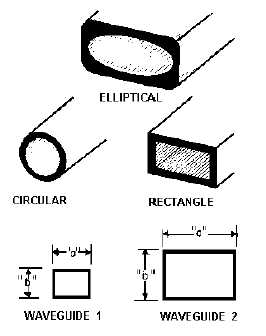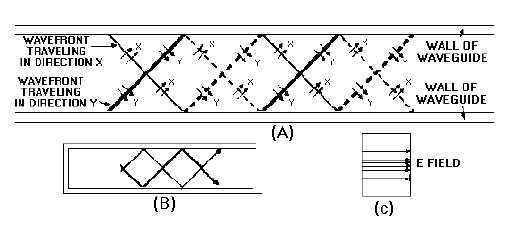1-62
the primary operating frequency. Energy is transported through waveguides by the interaction of electric
and magnetic fields, abbreviated E FIELD and H FIELD, respectively. The density of the E field varies at
the same rate as the applied voltage. If energy is to travel through a waveguide, two BOUNDARY
CONDITIONS must be met: (1) An electric field, to exist at the surface of a conductor, must be
perpendicular to the conductor, and (2) a varying magnetic field must exist in closed loops parallel to the
conductors and perpendicular to the electric field.
WAVEFRONTS travel down a waveguide by reflecting from the side walls in a zigzag pattern, as
shown in the figure. The striking angle, or angle of incidence ("), is the same as the angle of reflection
("), causing the reflected wavefront to have the same shape as the incident wavefront. The velocity of
wavefronts traveling down a waveguide is called the GROUP VELOCITY because of the zigzag path of
these wavefronts. The group velocity is slower than the velocity of wavefronts through space.
The MODES in waveguides are divided into two categories: (1) the TRANSVERSE ELECTRIC
(TE) mode and (2) the TRANSVERSE MAGNETIC (TM) mode. Subscripts are used to complete the





